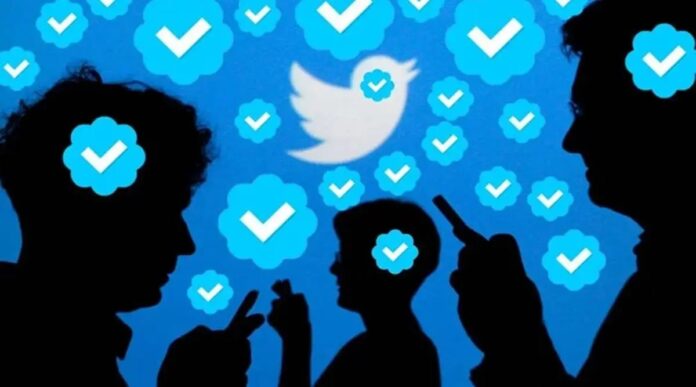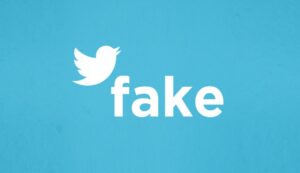Deal Got In Trouble Due To Fake Spam Account will be explained in this post. Elon Musk has accused Twitter of failing to give him accurate information about the number of phony and spam accounts using its network, putting the $44 billion plan to buy the social media business in peril.
Musk has frequently voiced his worries about Twitter’s phony account count and claimed that he thinks the business is underreporting the number. Musk’s attorneys said in a letter to Twitter’s chief legal officer, Vijaya Gadde, that the firm has not given him the details he has asked about spam and phony accounts, which is a “clear material breach” of the merger agreement.
Deal Got In Trouble Due To Fake Spam Account Of Twitter Rajkotupdates.news
In this article, you can know about Deal Got In Trouble Due To Fake Spam Account Of Twitter Rajkotupdates.news here are the details below;
Twitter has pledged to give Musk the information he has asked, and the company is certain that less than 5% of its users have bogus accounts, according to its statement. The valuation of Twitter, however, could be significantly impacted by Musk’s assertion that he thinks the number of false accounts is substantially greater.
Musk may be able to terminate the agreement without facing repercussions if he can show that Twitter deceived him about the amount of phony accounts using its network. For Twitter, which has been under pressure from investors to grow its company, this would be a significant setback.
The conflict between Musk and Twitter serves as a reminder of the difficulties social media companies encounter in preventing spam and false accounts. Hate speech, propaganda, and misinformation can all be spread using these accounts. They can also be used to sway elections and affect public opinion.
Social media businesses are coming under more and more pressure to take action against the issue of phony and spam accounts. The issue is complicated, and there is no simple fix.
What are fake and spam accounts?
Automated accounts designed to resemble real people are known as fake and spam accounts. They can be used to disseminate propaganda, false information, and offensive language. They can also be used to sway elections and affect public opinion.
People who seek to imitate real users create fake accounts. They can be used to disseminate propaganda, false information, and offensive language. They can also be used to sway elections and affect public opinion. People who want to send other users unsolicited communications create spam accounts. They may be employed to disseminate false information or advertise goods or services.
Why are fake and spam accounts a problem?
Because they can be used to disseminate propaganda, hate speech, and false information, fake and spam accounts are an issue. They can also be used to sway elections and affect public opinion.
Misinformation is information that is actively or accidentally spread that is inaccurate or misleading. It can be used to control people’s opinions or to deceive them. Information that is disseminated to support a specific viewpoint is known as propaganda. It is frequently used to sway people’s opinions or lead them to think something false.
Any kind of communication that disparages an individual or a group because of characteristics including race, religion, ethnic origin, national origin, sex, handicap, sexual orientation, or gender identity is considered hate speech.
Social media firms can use a number of strategies to combat the issue of fraudulent and spam accounts, such as:
- Artificial intelligence is being used to spot and delete spam and phony accounts.
- Requiring users to confirm their identification before allowing them to register.
- Making it more challenging for individuals to open several accounts.
- Users are informed of the risks posed by phony and spam accounts.
Social media businesses need to address the issue of phony and spam accounts. Hate speech, propaganda, and misinformation can all be spread using these accounts. They can also be used to sway elections and affect public opinion.
What is spam tweet?
A tweet sent by a bot or an automated account is referred to as spam. Spam tweets are frequently used to advertise goods or services or to disseminate false information. Additionally, they can be used to irritate or harass other users.
There are several ways to recognize spam tweets, including:
- They are frequently received from accounts without a bio or profile picture.
- They frequently have links that lead to unreliable or poorly known websites.
- They frequently have text that is pointless or repetitive.
- They frequently include calls to action like “Click here!” and “Sign up now!”
By using the “Report Tweet” button, you can notify Twitter if you receive a spam tweet. To stop receiving tweets from the account that posted it, you can also block it.
Here are some tips to help you avoid getting spam tweets:
- Only adhere to known and reliable accounts.
- When clicking links in tweets, use caution.
- Tweets with spam should be reported.
- Eliminate accounts that continuously tweet spam.
- You can prevent spam from entering your Twitter experience by adhering to these suggestions.
Where is spam in Twitter?
On Twitter, spam can be found in a number of areas, including:
Your timeline: If you follow accounts that are known to send spam, spam tweets may appear on your timeline.
Direct messages: You may receive direct messages (DMs) from spammers.
Hashtags are a common tool used by spammers to advertise their goods and services.
Trending themes: Spammers might exploit trending topics to increase the visibility of their tweets.
Spammers may reply to your tweets with advertisements or links to their websites.
By using the “Report Tweet” button, you can inform Twitter if you come across a spam tweet. To stop receiving tweets from the account that posted it, you can also block it.
The Different Types of Fake Twitter Accounts
Sure, here are a few instances of the various bogus Twitter account types:
Bot accounts: These are computerized accounts designed to resemble actual users. They can be used to disseminate propaganda, false information, and offensive language. They can also be used to sway elections and affect public opinion.
Accounts known as “sockpuppets” are false ones made by real persons to impersonate those of other users. They can be used to disseminate propaganda, false information, and offensive language. Other users may be targeted or bullied using them as well. Catfish accounts are fictitious profiles created to entice users into romantic relationships. They can be used to extort money or steal private information.
Troll accounts: These are phony accounts made specifically to post offensive or inflammatory material. They can be used to stifle conversations and put off bystanders.
Spam accounts: These are phony accounts made specifically to contact other users with unsolicited communications. They may be employed to propagate false information or advertise goods or services.
Understanding the various varieties of phony Twitter accounts is crucial for avoiding them. By using the “Report Tweet” button, you can notify Twitter if you come across a fraudulent account. You can ban the account in order to stop receiving tweets from it.
Here are some tips to help you identify fake twitter accounts:
- Accounts without a bio or profile picture are frequently bogus.
- Accounts with an extremely tiny number of followers or who only follow a few users are frequently bogus.
- Frequently bogus accounts are those that tweet a lot, especially during odd hours of the day.
- Accounts that tweet in illegible English or with odd grammar are frequently fraudulent.
- Frequently bogus accounts tweet about contentious or delicate subjects.
How to Spot a Fake Twitter Account
The following advice will help you identify a bogus Twitter account:
- Check the account’s age because fake accounts are frequently only recently created.
- Profile picture: Stock photos or images of celebrities are frequently used by fake accounts as their profile pictures.
- Bio: The bio on fake accounts is either absent or extremely brief.
- Fake accounts frequently have a relatively tiny number of followers and followings.
Tweets: False accounts usually tweet a lot, especially at strange times of the day. Additionally, they might tweet about touchy or contentious subjects.
Grammar and spelling: Poor grammar and spelling are common in fake accounts.
Links: Scam accounts frequently tweet links to dubious or unreliable websites.
Here are some additional tips to help you identify fake twitter accounts:
- Accounts that request money or personal data are frequently bogus.
- Accounts that advertise goods or services that sound too good to be true frequently contain fraudulent information.
- Often false accounts are used to distribute propaganda or false information.
Any account that you come across that fits one of these descriptions is probably a phony. The “Report Tweet” button on Twitter allows you to report phony accounts. You can ban the account in order to stop receiving tweets from it.
Reporting Fake Twitter Accounts
The ways to report bogus Twitter accounts are as follows:
- To report a Twitter account, visit it.
- In the account’s profile picture’s upper right corner, click the three dots.
- Choosing “Report Tweet.”
- You can choose “It’s harmful or abusive.”
- Simply click “It’s a fake account.”
- Describe any additional details you deem necessary.
- Hit “Submit.”
If Twitter determines that the account is breaking its rules of service, it will investigate your claim and take appropriate action.
Here are some additional tips for reporting fake Twitter accounts:
- When describing the account, be as descriptive as you can.
- Give any screenshots or other proof you have of the account’s fraud, if any.
- Give their contact information if you are aware of the real person or organization that the account is attempting to impersonate.
- You can contribute to making Twitter a safer place by flagging phony accounts.
FAQ
Describe Twitter.
Users can share brief messages, known as tweets, on the social media site Twitter. Text, images, videos, and links can all be included in tweets, which have a character limit of 280.
Why should I use Twitter?
You must first register for a Twitter account before using it. Once you’ve created an account, you may start tweeting and following other users. Simply click the “Follow” button on someone’s profile page to start following them. Click the “Tweet” button and enter your message to tweet. To your tweets, you can also include images, videos, and links.
What are a few advantages of Twitter use?
Twitter may be a terrific tool for keeping in touch with friends and family, keeping up with your favorite businesses and celebrities, and keeping up with current events. Twitter may be a fantastic platform for expressing your own ideas to a global audience.
What are some of the dangers of Twitter use?
If you’re not careful, Twitter can be harmful. Scammers and automated accounts frequently attempt to steal users’ personal information or money on Twitter. It is vital to be mindful of these risks and take precautions to keep oneself safe.
How can I guard against fraud and bots on Twitter?
Here are some pointers to assist you stay safe from fraud and Twitter bots:
- Do not click on links in tweets sent by strangers.
- Don’t reveal any of your private information to anyone on Twitter, including your bank account or Social Security number.
- Accounts without a bio or profile picture should be avoided.
- Twitter should be notified of any questionable accounts.
Conclusion
Users can share brief messages, known as tweets, on the social media site Twitter. Text, images, videos, and links can all be included in tweets, which have a character limit of 280. Twitter may be a terrific tool for keeping in touch with friends and family, keeping up with your favorite businesses and celebrities, and keeping up with current events. However, it’s necessary to be conscious of the dangers associated with using Twitter, including scammers and automated systems that attempt to steal users’ money or personal information. You may help to protect yourself against these threats and have a secure and pleasurable experience on Twitter by paying attention to the advice given above.






